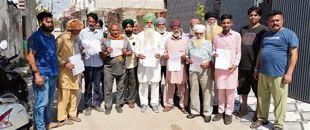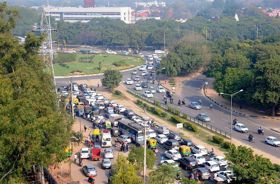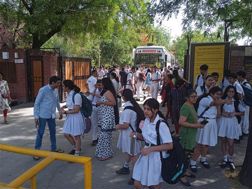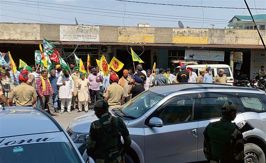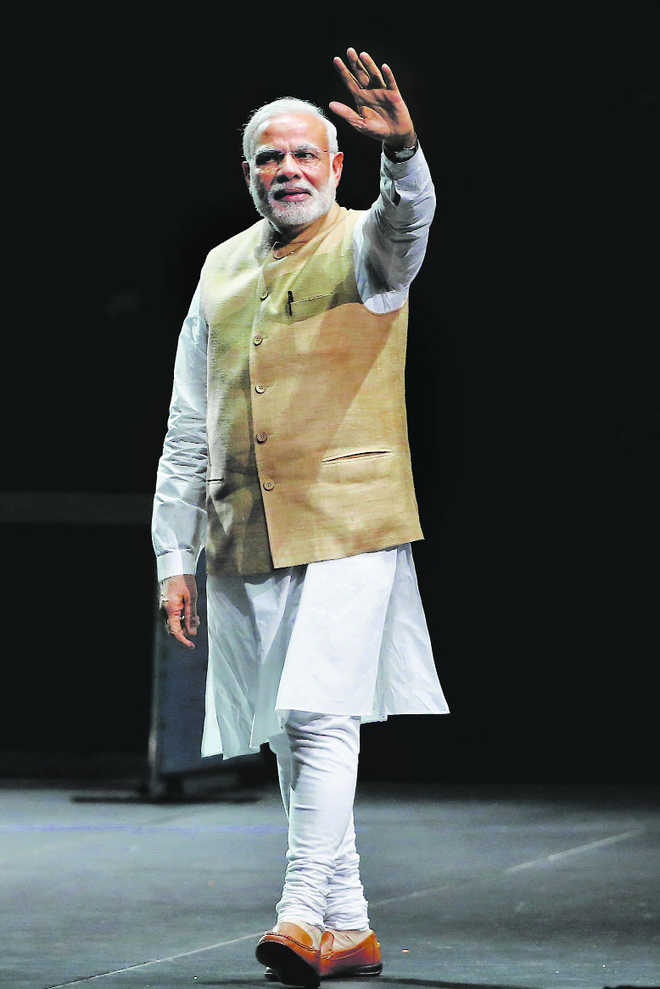
Narendra Modi, Prime Minister
Sandeep Dikshit in New Delhi
Foreign governments have treated Narendra Modi’s stumping among the diaspora with an indulgent eye as long as it remains a one-way street and does not stir up social strife. They don’t mind if it enthuses Modi’s partisans back home till their businesses get orders and their security establishment gets a prominent billing in India’s strategic posturing.
Read also:
There can be, however, no benchmarking of the Indian diaspora in the US with the Jewish lobby yet, and perhaps never. The proximity of American Jews with every White House incumbent is a double-layered bonding. First, there is the race-religion induced propinquity. The Christian-dominated American centre of power is joined at the hips with the Jews because of the similarity in the origin of their religions. This is buttressed by their common Anglo-Saxon cultural and ancestral commonality — most American Jews are Ashkenazi and Sephardic. In plain and politically incorrect terms, they are white and arrived from the same parts of Europe a couple of centuries after Christians migrated to America.
The second proximity that the Indian-Americans can never emulate is strategic — the Jews in Israel are the only reliable beachhead in the acutely unreliable sands of Arabia across 2,500 km to the west. Their ties were forged in blood when Jews and the ex-Europeans settled in America fought together in the American Civil War. At that point in history, the only Indians making their way past racial discrimination in the US were the Sikhs, often slipping under the barbed wire from Mexico, unloved and unwanted.
The Jews escaping from the World Wars in Europe brought in advancement (the nuclear technology is one instance) and their business-savvy ways — both of which provided the Americans with welcome shortcuts to global domination. The Indians were then still stragglers, their desire for permanently settling down stymied by legislations disallowing non-whites.
Indians come into the picture
The Indian population in the US found its feet in policy-making apparatus only since the late 1990s, thanks to the demand for techies to counter the Y2K or the Millennium Bug that got intertwined with the exponential growth of computer-fuelled revolution.
As a result, the Indian-origin population in the US doubled only in the past 25 years to stand at 35 lakh today. The Jews, however, outnumber them by two times and are well ensconced in American sinews. They share the top echelons as presidential candidates, Noble Prize winners, spearheads of culture and arts and, what matters the most, as owners of financial and industrial behemoths that power and maintain America’s global leadership.
Despite the doubling of the diaspora in the 21st century, no Indian-American comes closely in wealth to Jewish-Americans like George Soros, Larry Ellison (Oracle), the casino mogul Sheldon Adelson. Or in proximity to the White House — Ben Bernanke (former Fed Reserve chief), Rahm Emanuel (former White House Chief of Staff) or Supreme Court judge Ruth Bader Ginsburg.
That is why PM Modi’s Houston rally, comprising mostly upper caste Hindus from the cow belt of North India, is fraught with risk. Any amount of spin cannot obfuscate the fact that a community still making its way up from the current status of earning more than the average American cannot hoist divisiveness brought from a ‘Hard State’ approach on Kashmir as its pennant.
Unlike its compatriots in India who are slipping rapidly in power and influence, the American liberal had won the culture war long back. The continuing clampdown in Kashmir should have been left to the Indian diplomats in New York and Washington to handle. It need not have become the underpinning for mobilisation for ‘Howdy, Modi’, nor should it have become the vehicle to tar the contrarians, as is suggested by the breathless commentary about mosques as pick-up points for a counter-rally in Houston.
Trump’s plausible reasons
The breakdown of the Indian-American community does not lend itself to the argument that the attendance at the Houston rally is a representative slice. Remove the Dalits, Christians and Muslims of Indian origin, besides those who are wedded to a liberal way of life because of the minority status (Indian techie Srinivas Kuchibhotla was shot dead in the US in a suspected hate crime), the Houston crowd would be drawn from a mere 10 lakh diaspora.
That is the reason why instead of salivating on the prospects of garnering the Indian-American vote, Trump’s gunslingers have embarked on a trade and investment deal — all favourable to the US — as payback for the President’s attendance at the rally. That also explains US Ambassador to India Kevin Juster’s unusual presence in the corridors of Commerce Ministry in Delhi to speed up concessions for the American industry to be announced at the Houston rally.
The hype behind ‘Howdy, Modi’ gladdens the cockles of ultra-nationalists in India. But it also stiffens the backs of those in its sights — the Muslims, who in the US are numerically larger and much more diverse and integrated than the narrow section of Indian-Americans at the rally. What makes it worse is that the head of the Islamic Society of North America is Sayyid M Syeed who, in his own words, fled Kashmir. And four days after the August 5 crackdown, the US Embassy had to strain every nerve to extract his wife from Kashmir where she had gone for a visit.
Indian-Americans’ diplomatic heft
The reach of the Indian-Americans in influencing Washington’s policy is frequently overstated by polite Indian diplomats who are thankful for the little help they get. The US outreach to India began with the Kicklighter Proposals with the triple aim of uncoupling Russia (then Soviet Union), containing China and selling its weaponry. This was at a time when the Indian-American community was less than one-third its present strength.
If this community really had the heft, India would not have promised nuclear reactors worth more than $50 billion to the US as a quid pro quo for the nuclear agreement. Or it would not have meekly acquiesced to Trump scrapping the GSP preference to India. Or its lack of opposition to the way diplomat Devyani Khobragade was treated by an American of Indian origin.
The Canadian Intelligence has started keeping tabs on the Indian-Canadian community because of the divisiveness within, even though it is not pronounced. If the Indian-American community embarks on that path, it will move away from its goal of becoming a paler shadow of the successful Jewish community that largely avoids a split within to bring benefits to Israel.





















